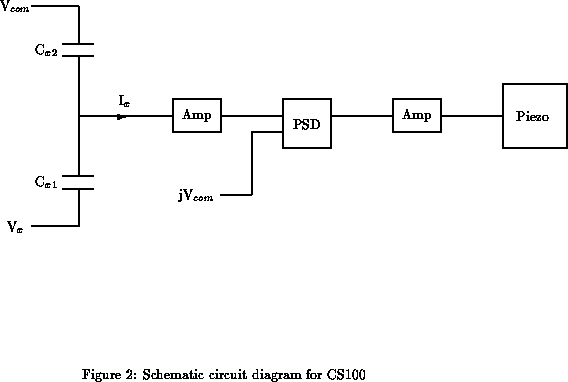
Previous: General principles
Up: Technical overview: Fabry-Perot spectroscopy
Next: Etalon scanning
Previous Page: General principles
Next Page: Etalon scanning
To achieve optimal performance from a Fabry-Perot interferometer its plates must be held parallel and the distance between them must be controlled to a high degree of accuracy. Departures from parallelism and required spacing should be much less than the surface irregularities of the plates themselves. Modern interferometer plates can be polished so that surface irregularities are less then about 2.5 nm (lambda/200 at a wavelength of 5000 Å), thus mechanical errors should be less than about 1 nm
It is difficult to achieve stabilities of this order for any length of time in a system that must allow the plate-spacing to be varied by accurately controlled amounts, unless some form of active feedback is employed to sense the actual plate position. This is particularly true for an instrument such as TAURUS, whose gravity vector varies as the telescope changes position.
The TAURUS etalons are stabilized in parallelism and gap by means of a Queensgate Instruments CS100 servo-stabilization system. This uses capacitance micrometers to sense variations in parallelism and departures from required spacing, and piezo-electric transducers to correct these errors. Capacitance micrometry makes it possible to sense pico-metre displacements.
The way this works in practice is as follows. The two coated plates which make up the Fabry-Perot etalon are held apart by three piezo-electric transducers( A, B and C). Five capacitors (CX1, CX2, CY1, CY2, CZ) are formed by evaporating gold pads onto the interferometer plates. The vector between CX1 and CX2 defines the 'X-axis' of the etalon, and the vector between CY1 and CY2 defines the 'Y axis'. The X-axis and Y-axis are perpendicular to each other, and the Y-axis is aligned with the vector joining the centre of the etalon plates to the connector block.
Parallism information is obtained by comparing CX1 with CX2 (the X-channel) and CY1 with CY2 (the Y channel). To monitor the spacing, CZ is compared with a further air-spaced reference capacitor CREF built onto one of the plates (the Z channel).
It is important to note that the measured capacitance depends not just on the optical spacing, but also on the dielectric constant. Changes in temperature, pressure and humidity will cause changes in the dielectric constant. Therefore in normal operation the TAURUS--2 etalon cavity is continually flushed with dry nitrogen.
The CS100 derives an error signal for each of the channels (x, y and z) from the capacitators, and applies a correction via the piezo transducers. The way in which it does this is shown in Figure 2, a schematic circuit diagram for the X channel.
In operation, the three capacitance bridges are excited by four AC bridge drive voltages of amplitude Vx, Vy, Vz, and Vcom. These all have nominally equal amplitudes, but Vcom has opposite phase to the others. Thus, taking the X channel as an example, if CX1 is equal to CX2, no current flow into the amplifier. If the etalon were to go out of parallel, so that CX1 is not equal to CX2, then a current would flow into the amplifier. This would be 90 degrees phase advanced on Vcom if CX2>CX1 and 90 degrees retarded if CX2<CX1. The phase sensitive detector PSD, which uses Vcom phase shifted by 90 degrees as a reference, will thus generate a voltage proportional to the error in magnitude and sense. This voltage is amplified and applied to the piezo--electric transducer B, in the correct sense to reduce the error, i.e. a closed loop servo is formed.
Note that the X, Y and Z channels are not entirely independent. Moving the B transducer in response to an X channel error will actually generate an error in the Y channel, but this will be corrected by the Y channel servo. The Y servo-channel acts via transducer A, which does not generate an error in the X channel. The Z channel works by applying the same error signal to all three transducers.
In practice, when the interferometer plates are parallel CX1 will not be exactly equal to CX2. Also CZ will not equal CREF at the required optical spacing. Thus in order to be able to align the etalon, and set the gap, it is necessary to be able to apply an offset to the error signals in each channel. This is usually done using the front panel controls on the CS100 during instrument setup (see section ?), and using the control computer during an observation (see section ?).
Losses in the cables and non-ideal behaviour of the bridge drive circuitry produce a component of current into the amplifiers that is in phase with the bridge drive signal, instead of 90 degrees out of phase. This 'resistive' component is not detected by the PSD, so does little harm, but it is best to null it out to avoid the possibility of overloading the amplifiers. To enable this, the front panel controls of the CS100 include a resistive balance offset for each channel.
The way in which the etalon performs whilst being servo'd depends primarily on two parameters, the gain and time constant. The gain and time constant are set so that the response of the etalon to a change in gap is critically damped. This issue is analysed in detail in the CS100 manual.
The response time of the etalon to a lambda/2 (one order) step input is about 300 microseconds. Typical performance of the system is such that a 'mechanical' finesse Nmech > 50 can be maintained almost indefinitely. Thus the spectral resolving power of the system is limited by the effective finesse of the etalons themselves, which typically has a value of Neff = 20 --30 (see section ?).